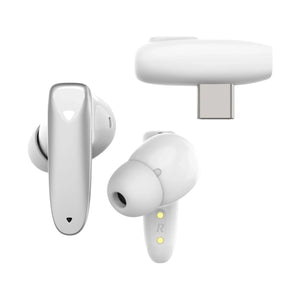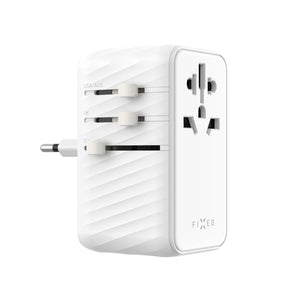Data and charging cables are technologies that practically everyone uses. But no cable is the same. What types are currently popular and what trends and innovations are moving the world of cables? We will answer that in the following lines.
How it started
Transferring files to a computer, printing , charging your phone and headphones, or transferring audio and video from one device to another. Data and charging cables have become an integral part of our lives in recent decades. But when did they first see the light of day? Before we move on to new trends and innovations, it's good to know something about their origins. The term "USB" (from the English Universal Serial Bus) began to circulate among people in the mid-90s (around 1996), when the USB 1.0 cable with a speed of 1.5 Mbps was created, followed by the USB 1.1 type with a speed of 12 Mbps. What a difference compared to today, when we calculate speed in gigabits.
As users' demands for faster charging and faster data transfer increased over time, manufacturers had to improve cables. In the new millennium, mini USB and microUSB were created, and later the now preferred USB-C saw the light of day. The latest generation of USB4 provides transfer speeds of more than 40 Gbps , which was unimaginable just a few years ago. See below how cables have evolved over time.
Evolution of data transfer speeds
| Name | Launched | Transmission speed |
|---|---|---|
| USB 1.0 and 1.1 | late 1990s | USB 1.0: up to 1.5 Mbps (Low Speed) USB 1.1: up to 12 Mbps (Full Speed) |
| USB 2.0 | 2000 | up to 480 Mbps (High Speed) |
| USB 3.0/3.1 Gen 1 | 2008 | up to 5 Gbps (SuperSpeed) |
| USB 3.1 Gen 2 | 2013 | up to 10 Gbps (SuperSpeed+) |
| USB 3.2 | 2017 | up to 20 Gbps in dual-channel transmission mode (SuperSpeed+ 20 Gbps) |
| USB 4 | 2019 | up to 40Gbps |
| Thunderbolt 3 and 4 | Thunderbolt 3: up to 40Gbps Thunderbolt 4: provides the same speed as Thunderbolt 3, but with better support for more devices and higher security standards |
Now let's get to the main thing: trends and innovations in the field of data and charging cables.
1. Fast charging is the alpha and omega
Speed, speed, and more speed. In some situations, users need to charge their mobile phone or laptop in tens or even units of minutes, so it probably won't surprise you that one of the biggest trends in recent years is fast charging. Current cables can charge devices extremely quickly, thanks to Qualcomm Quick Charge and USB Power Delivery (USB-PD) technologies , for example. The latest USB-PD 3.1 standard supports charging up to 140 W, so your device will get power several times faster. A USB-C cable can theoretically handle 240 W, but no device or charger is built for that power yet.
2. No USB-C, not even a bang
Much has been written and talked about the USB-C cable in the recent past, especially in connection with EU legislation. In order to reduce electronic waste, it requires manufacturers (from April 2026 for laptops and from December 2024 for other devices) to produce all devices with a USB-C connector.
Whatever your stance on this issue, the truth is that USB-C has become the alpha and omega among cables around the world and will soon be the most widespread of all. It offers high transfer speeds, but most importantly, it is universal, so you can charge almost any device with it - from mobile phones to tablets and laptops to headphones. By the way, Apple also switched to USB-C ahead of time with its iPhones 15. Using a USB-C cable is also convenient because you can connect it in either direction . When choosing, however, pay attention to the parameters of the given USB-C, because each has different specifications, and therefore also the price. In short, no cable is the same.
Apple has been using the Lightning connector extensively on its devices until recently, replacing the older 30-pin connector. Lightning is stable and can handle fast charging. However, due to the aforementioned EU legislation, Apple is moving away from this connector and switching to USB-C.
3. Smart cables are also a trend
This innovation is not talked about much, which is a shame because it could significantly affect the world of data and charging cables in the coming years. So-called smart cables offer additional functions compared to regular ones, such as monitoring the charging status or built-in LED lighting for easy use in the dark.
Smart cables are a bit more expensive, but if you're a tech enthusiast and want to always be one step ahead of others, we recommend getting one.
4. The cable from the manufacturer may not be the best
Manufacturers of mobile phones, tablets, headphones and other devices often include a data or charging cable in the box. The problem is that these cables are usually not of very good quality. If you care about the durability of your cable and don't want to throw it in the trash after a month, invest in a quality and durable product. Buying durable cables is becoming increasingly trendy among users, because they will last for many years.
Did you know that at FIXED we are working on developing more durable cables with reinforced construction? For example, they have nylon braiding, increasing resistance to wear and breakage.
We are preparing a cable with a 5-year warranty that will withstand the impossible
At FIXED, we care about data and charging cables being not only fast but also durable.
Years ago, we produced simple and elegant cables with various connectors (USB-A, microUSB, USB-C or Lightning). Over time, and with the advent of PD chargers with a USB-C output connector, we also added USB-C to USB-C cables and USB-C to Lightning, which can handle charging power up to 60 W and data transfer speeds in the USB 2.0 standard. In addition, we managed to improve them with Liquid Silicone material, which is durable, pleasant to the touch and does not tangle.
In the FIXED offer you will find many data and charging cables that are highly durable and boast the latest technologies.
As time went on, we also focused more and more on producing premium cables that surpass "ordinary" ones in many ways. That's why today in the FIXED offer you will also find a unique charging cable that has optical fibers inside - during charging, the interface glows in RGB colors. It is therefore ideal for computer gamers, for example.
And what are we planning next? Among other things, a premium line of FIXED Armor cables, which will boast a beautiful nylon braid ensuring high strength and durability . The part between the cable and the connector will be coated with a rubber component, which will increase the durability of this Achilles heel of all cables (tested up to 150 thousand bends). FIXED Armor can withstand almost impossible conditions, which is why we give it a 5-year warranty.
We are also preparing an unusual cable aimed primarily at geeks , with a digital display and a transparent connector. It will be another great example that even a classic cable can be packed with electronics.
Do you need help choosing? Write to us
Whether you need help choosing cables or other FIXED products, don't forget that we are always here for you. Feel free to write to us anytime in the live chat here on the website, we will be happy to help you.













